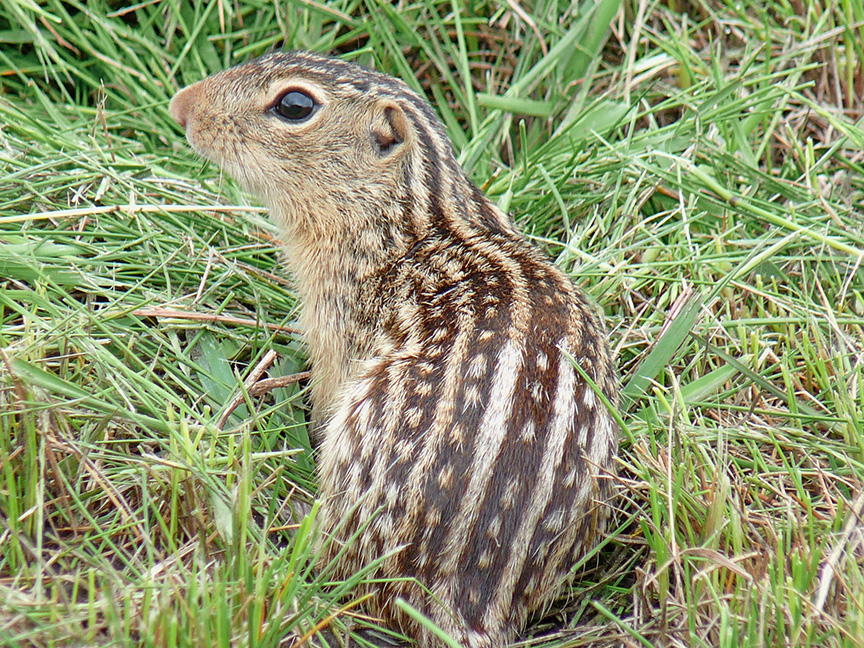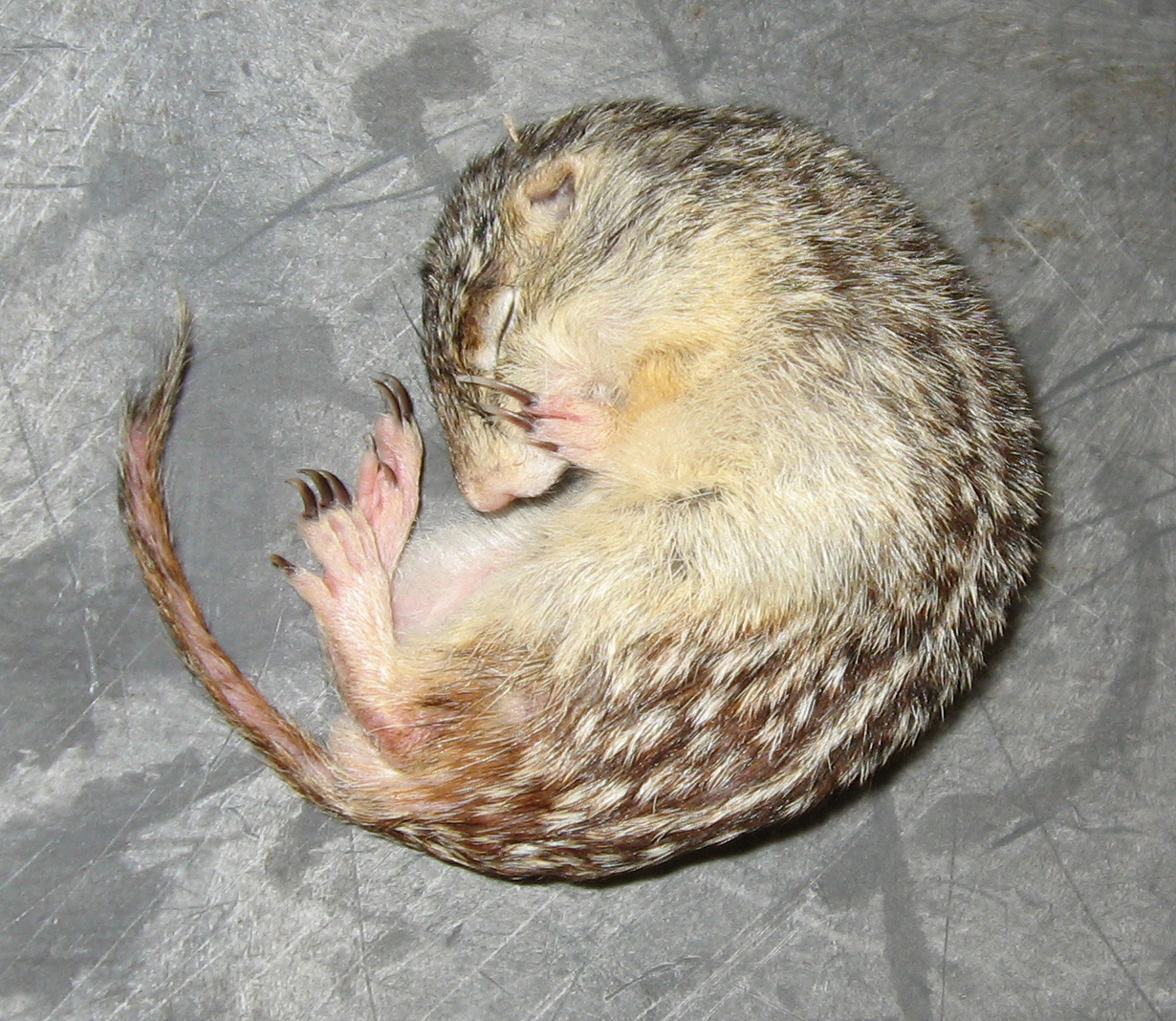The thirteen-lined ground squirrel lives in the prairies and grasslands across North America where they are faced with food shortages and the deep cold in winter. When winter comes to their hibernation sites they drop their body temperatures to near ambient temperatures, breathing and heart rate drop, and they depress their metabolic rate to less than 5% of euthermic resting state to extend the time their body fuel storages can support them. These changes allow the squirrel to conserve up to 90% of the energy that would have been lost to maintaining euthermia throughout the winter season. Hibernation in this small mammal is characterized by seasonal heterothermy and entry into long periods of torpor that are disrupted with short bouts of arousals back to euthermia. In late summer the squirrel exhibits hyperphagia and increases its lipids reserves and then goes on to enter its burrow by late October. It then rolls into a ball and begins to slowly drop its metabolic rate, during this period its breathing will drop from 200 breaths per minute to one breath every five minutes. The squirrel then emerges in March to begin feeding and mating.



